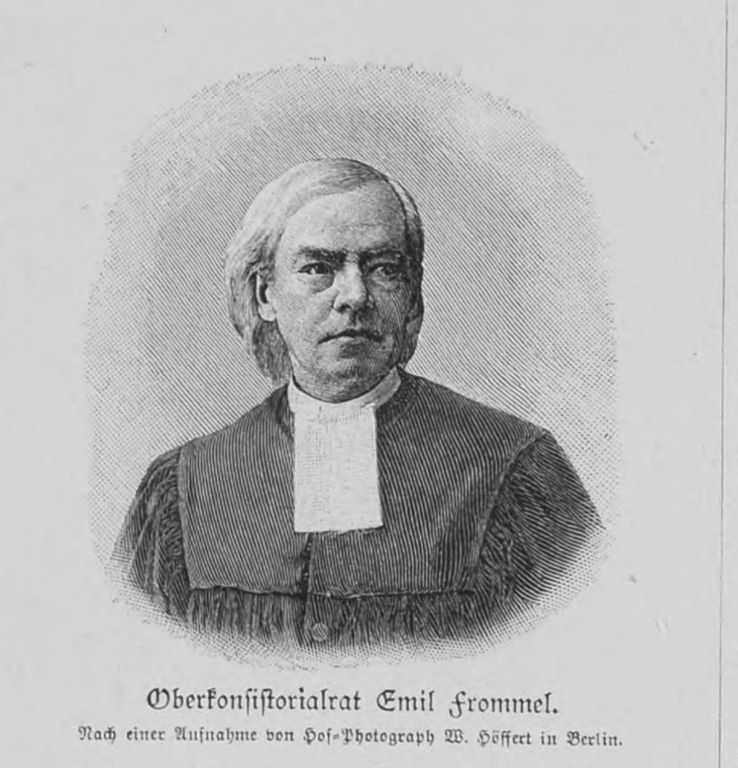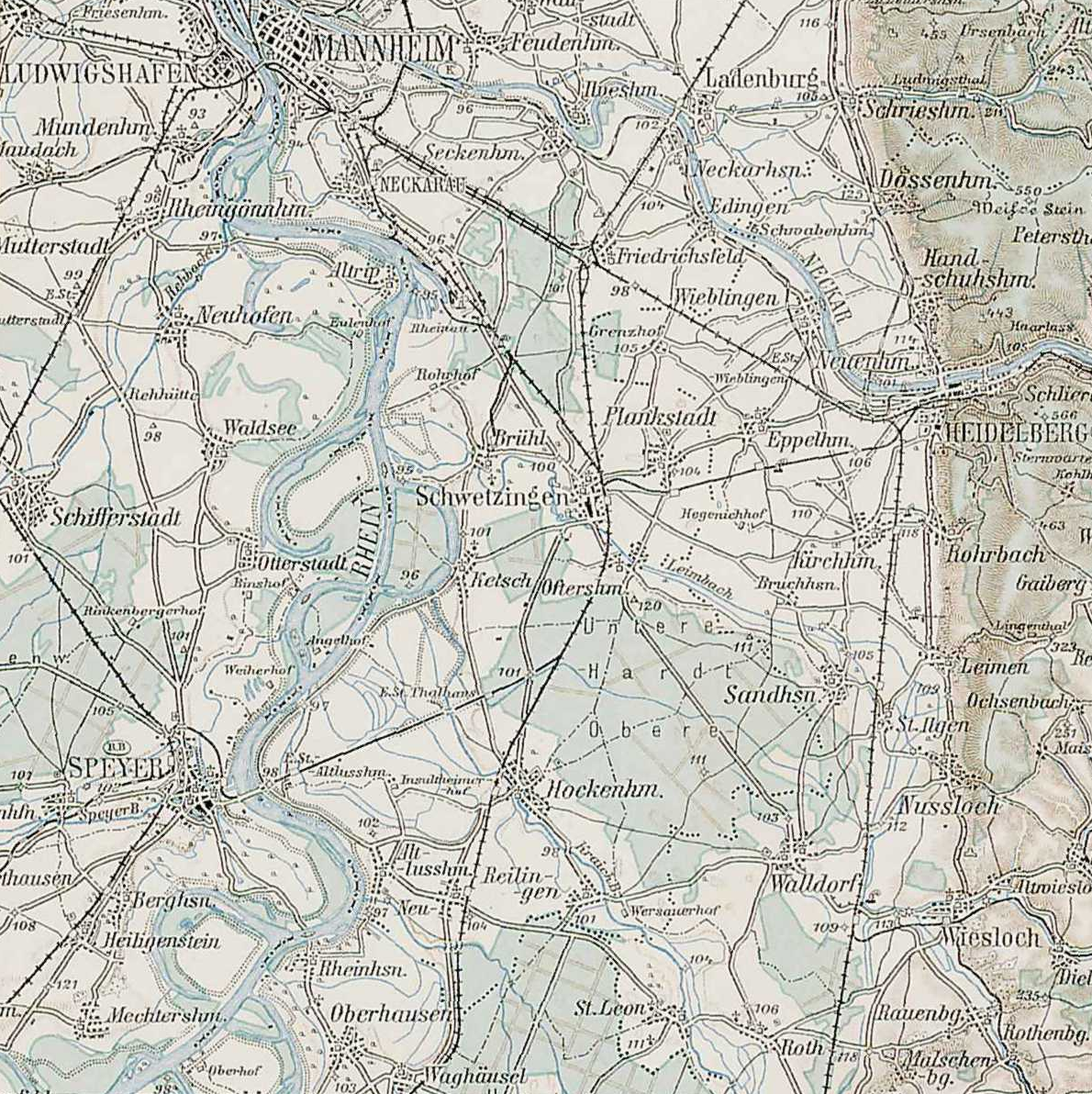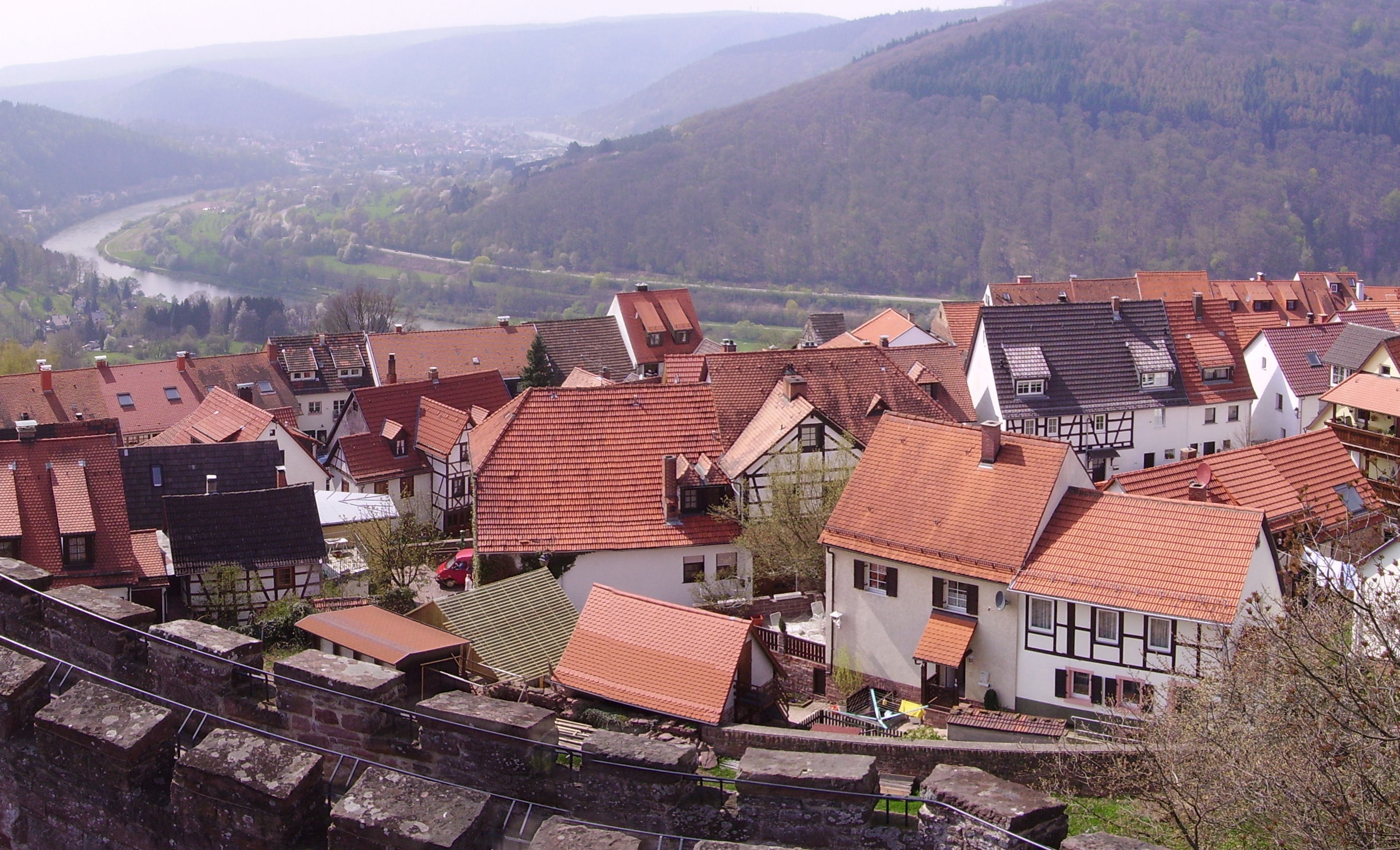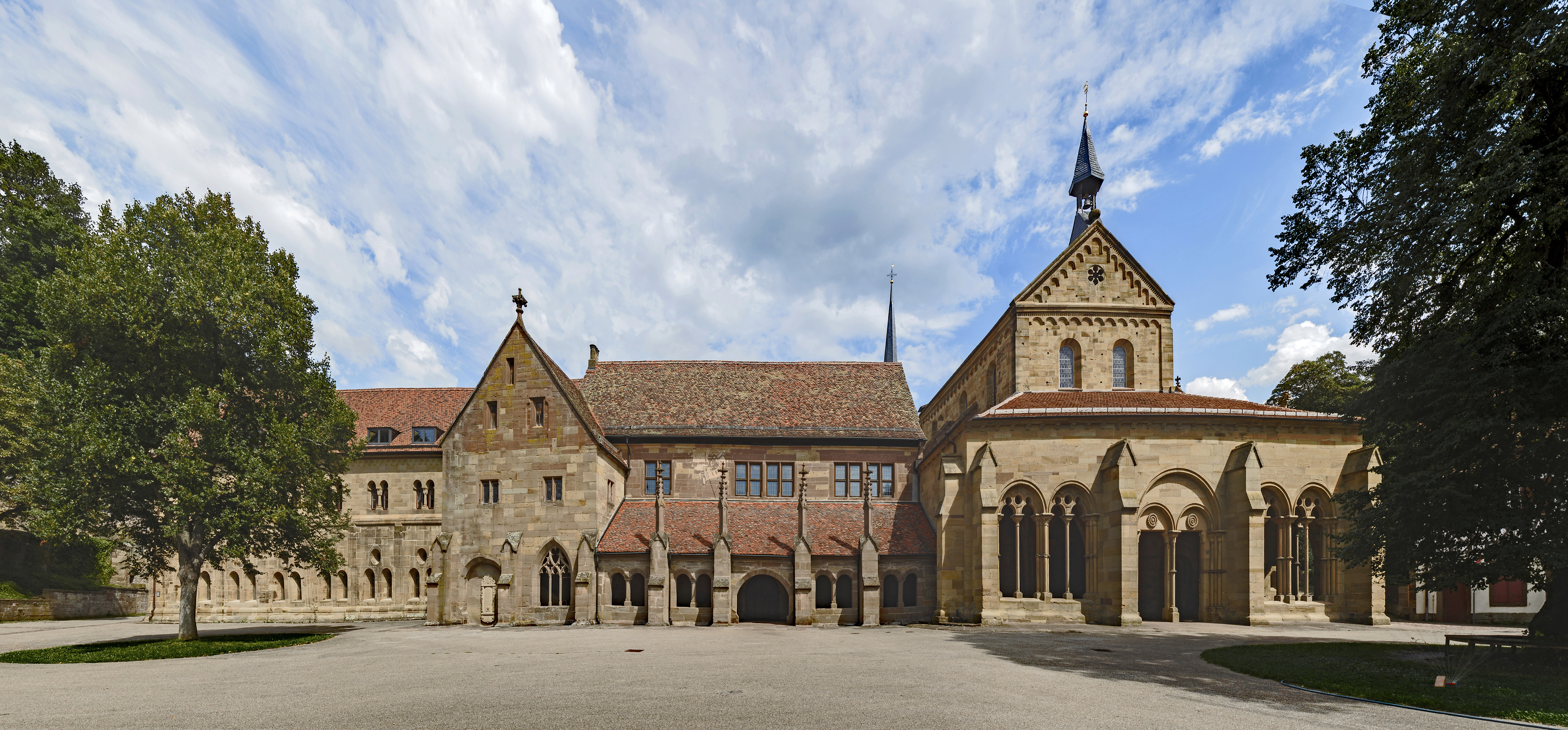|
Altlußheim
Altlußheim is a municipality in Baden-Württemberg and belongs to Rhein-Neckar-Kreis. Altlußheim sits in the Rhine rift directly on the right bank of a meandering of the Rhine, where the Kriegbach flows into the Rhine. West of the municipality, on the opposite side of the Rhine in the Rhineland-Palatinate is the city of Speyer. Altlußheim is connected to Speyer by federal highway (''Bundesstraße'') B 39. Less than a kilometer to the East lies Neulußheim. To the South is Oberhausen-Rheinhausen. To the North-East Altlußheim borders on Hockenheim. History Over the centuries, the name of the village has changed often. You can find the following documented: ''Lossa'', ''Locze'', ''Loszem'', ''Lossem'', ''Lozsheim'', ''Lussem'', ''Luzheim'', and later ''Lußheim''. Lußheim was originally a fishing settlement on the Roman road. The residents lived from fishing in the waters of the meanderings of the Rhine. At the highest point in the village, there was a heathen temple ... [...More Info...] [...Related Items...] OR: [Wikipedia] [Google] [Baidu] |
Hockenheim
Hockenheim () is a town in northwest Baden-Württemberg, Germany, about 20 km south of Mannheim and 10 km west of Walldorf. It is located in the Upper Rhine valley on the tourist theme routes "Baden Asparagus Route" () and Bertha Benz Memorial Route. The town is widely known for its Hockenheimring, a motor racing course, which has hosted over 30 Formula One German Grand Prix races since 1970. Hockenheim is one of the six largest towns in the Rhein-Neckar-Kreis district; since 1999 the number of inhabitants exceeded the 20,000 threshold, thus the town received the status of a regional central town (''Große Kreisstadt'') in 2001. It is twinned with the French town of Commercy, the German town of Hohenstein-Ernstthal in Saxony and the American town of Mooresville, North Carolina. Geography Location and environment Hockenheim is located in the Upper Rhine valley on an old trade route from Frankfurt to Basel. The brook Kraichbach divides the town in an eastern and a smalle ... [...More Info...] [...Related Items...] OR: [Wikipedia] [Google] [Baidu] |
Rhein-Neckar-Kreis
The Rhein-Neckar-Kreis is a district in the northwest of Baden-Württemberg, Germany. The administrative headquarters are based in the city Heidelberg, which is a district-free city. As of 2019, the district is the most populous in Baden-Württemberg. History The district was created in 1973 by merging the previous districts of Heidelberg, Mannheim and Sinsheim. Geography The district is named after the two main rivers which flow through the district, the Rhine and Neckar. The highest elevation is 580 m near the 584 m tall peak of the Odenwald mountain Stiefelhöhe, located near Heiligkreuzsteinach. The lowest elevation with 92 m is in Ilvesheim, located in the Neckar valley. Sights Government The district is governed by a district assembly (''Kreistag'') and a district executive (''Landrat''). The eligible voters of the district elect the Kreistag every 5 years. This body in turn elects the Landrat every 8 years. The Landrat is the legal representative of the district as wel ... [...More Info...] [...Related Items...] OR: [Wikipedia] [Google] [Baidu] |
Kriegbach
Kriegbach is a river of Baden-Württemberg, Germany. It branches off the Kraichbach near Ubstadt-Weiher, and flows into the Rhine in Altlußheim. See also *List of rivers of Baden-Württemberg A list of rivers of Baden-Württemberg, Germany: A * Aal * Aalbach * Aalenbach * Ablach * Ach *Acher * Adelbach *Aich * Aid * Aischbach, tributary of the Kinzig * Aischbach, tributary of the Körsch *Aitrach, tributary of the Danube *Aitrach, tr ... References Rivers of Baden-Württemberg Rivers of Germany {{BadenWürttemberg-river-stub ... [...More Info...] [...Related Items...] OR: [Wikipedia] [Google] [Baidu] |
Heathen Temple
A heathen hof or Germanic pagan temple was a temple building of Germanic religion; a few have also been built for use in modern heathenry. The term ''hof'' is taken from Old Norse. Background Etymologically, the Old Norse word ''hof'' is the same as the Afrikaans, Dutch and German word ''hof'', which originally meant a hall and later came to refer to a court (originally in the meaning of a royal or aristocratic court) and then also to a farm. In medieval Scandinavian sources, it occurs once as a hall, in the Eddic poem ''Hymiskviða'', and beginning in the fourteenth century, in the "court" meaning. Otherwise, it occurs only as a word for a temple. ''Hof'' also occasionally occurs with the meaning "temple" in Old High German and is cognate with the Old English . In Scandinavia during the Viking Age, it appears to have displaced older terms for a sacred place, '' vé'', ''hörgr'', ''lundr'', ''vangr'', and ''vin'', particularly in the West Norse linguistic area, namely Norway an ... [...More Info...] [...Related Items...] OR: [Wikipedia] [Google] [Baidu] |
Bishop Of Speyer
The Bishop of Speyer is the Ordinary of the Roman Catholic Diocese of Speyer, which is a suffragan see of the Archdiocese of Bamberg."Diocese of Speyer" ''''. David M. Cheney. Retrieved February 29, 2016"Diocese of Speyer" ''GCatholic.org''. Gabriel Chow. Retrieved February 29, 2016 The diocese covers an area of 5,893 km². The current bishop is Karl-Heinz Wiesemann. ... [...More Info...] [...Related Items...] OR: [Wikipedia] [Google] [Baidu] |
Ulrich, Duke Of Württemberg
Duke Ulrich of Württemberg (8 February 14876 November 1550) succeeded his kinsman Eberhard II as Duke of Württemberg in 1498. He was declared of age in 1503. His volatile personality made him infamous, being called the "Swabian Henry VIII" by historians. Early life Duke Ulrich was born 8 February 1487 and his mother died in his birth. His father, Henry, Count of Württemberg, was mentally deranged, likely as a result of his three-year imprisonment by Duke Charles the Bold of Burgundy, was banished to Hohenurach Castle in the County of Urach, and his only guardian died when he was nine years of age. He served the German king, Maximilian I, in the war over the succession to the duchy of Bavaria-Landshut in 1504, receiving some additions to Württemberg as a reward; he accompanied Maximilian on his unfinished journey to Rome in 1508; and he marched with the imperial army into France in 1513. Meanwhile, in Württemberg Ulrich had become very unpopular. His extravagance had l ... [...More Info...] [...Related Items...] OR: [Wikipedia] [Google] [Baidu] |
Electorate Of The Palatinate
The Electoral Palatinate (german: Kurpfalz) or the Palatinate (), officially the Electorate of the Palatinate (), was a state that was part of the Holy Roman Empire. The electorate had its origins under the rulership of the Counts Palatine of Lotharingia from 915, it was then restructured under the Counts Palatine of the Rhine in 1085. These counts palatine of the Rhine would serve as prince-electors () from "time immemorial", and were noted as such in a papal letter of 1261, they were confirmed as electors by the Golden Bull of 1356. The territory stretched from the left bank of the Upper Rhine, from the Hunsrück mountain range in what is today the Palatinate region in the German federal state of Rhineland-Palatinate and the adjacent parts of the French regions of Alsace and Lorraine (bailiwick of Seltz from 1418 to 1766) to the opposite territory on the east bank of the Rhine in present-day Hesse and Baden-Württemberg up to the Odenwald range and the southern Kraichgau re ... [...More Info...] [...Related Items...] OR: [Wikipedia] [Google] [Baidu] |
Tithe
A tithe (; from Old English: ''teogoþa'' "tenth") is a one-tenth part of something, paid as a contribution to a religious organization or compulsory tax to government. Today, tithes are normally voluntary and paid in cash or cheques or more recently via online giving, whereas historically tithes were required and paid in kind, such as agricultural produce. After the separation of church and state, church tax linked to the tax system are instead used in many countries to support their national church. Donations to the church beyond what is owed in the tithe, or by those attending a congregation who are not members or adherents, are known as offerings, and often are designated for specific purposes such as a building program, debt retirement, or mission work. Many Christian denominations hold Jesus taught that tithing must be done in conjunction with a deep concern for "justice, mercy and faithfulness" (cf. Matthew 23:23). Tithing was taught at early Christian church councils, ... [...More Info...] [...Related Items...] OR: [Wikipedia] [Google] [Baidu] |
Vogt
During the Middle Ages, an (sometimes given as modern English: advocate; German: ; French: ) was an office-holder who was legally delegated to perform some of the secular responsibilities of a major feudal lord, or for an institution such as an abbey. Many such positions developed, especially in the Holy Roman Empire. Typically, these evolved to include responsibility for aspects of the daily management of agricultural lands, villages and cities. In some regions, advocates were governors of large provinces, sometimes distinguished by terms such as (in German). While the term was eventually used to refer to many types of governorship and advocacy, one of the earliest and most important types of was the church advocate (). These were originally lay lords, who not only helped defend religious institutions in the secular world, but were also responsible for exercising lordly responsibilities within the church's lands, such as the handling of legal cases which might require the u ... [...More Info...] [...Related Items...] OR: [Wikipedia] [Google] [Baidu] |
Sheriff
A sheriff is a government official, with varying duties, existing in some countries with historical ties to England where the office originated. There is an analogous, although independently developed, office in Iceland that is commonly translated to English as ''sherif''. Description Historically, a sheriff was a legal official with responsibility for a shire, the term being a contraction of " shire reeve" (Old English ). In British English, the political or legal office of a sheriff, term of office of a sheriff, or jurisdiction of a sheriff, is called a shrievalty in England and Wales, and a sheriffdom in Scotland. In modern times, the specific combination of legal, political and ceremonial duties of a sheriff varies greatly from country to country. * In England, Northern Ireland, or Wales, a sheriff (or high sheriff) is a ceremonial county or city official. * In Scotland, sheriffs are judges. * In the Republic of Ireland, in some counties and in the cities of Dubli ... [...More Info...] [...Related Items...] OR: [Wikipedia] [Google] [Baidu] |
Maulbronn Abbey
Maulbronn Monastery (german: Kloster Maulbronn) is a former Cistercian abbey and ecclesiastical state in the Holy Roman Empire located at Maulbronn, Baden-Württemberg. The monastery complex, one of the best-preserved in Europe, was named a UNESCO World Heritage Site in 1993. The monastery was founded in 1147 and experienced rapid economic and political growth in the 12th century, but then hardship in the late 13th century and the 14th century. Prosperity returned in the 15th century and lasted until Maulbronn was annexed by the Duchy of Württemberg in 1504. Over the 16th century, the Cistercian monastery was dissolved and replaced with a Protestant seminary. It also became the seat of an important administrative district of the Duchy and later Kingdom of Württemberg. The complex, surrounded by turreted walls and a tower gate, today houses the Maulbronn town hall and other administrative offices, and a police station. The monastery itself contains an Evangelical seminary and a b ... [...More Info...] [...Related Items...] OR: [Wikipedia] [Google] [Baidu] |
Middle Ages
In the history of Europe, the Middle Ages or medieval period lasted approximately from the late 5th to the late 15th centuries, similar to the post-classical period of global history. It began with the fall of the Western Roman Empire and transitioned into the Renaissance and the Age of Discovery. The Middle Ages is the middle period of the three traditional divisions of Western history: classical antiquity, the medieval period, and the modern period. The medieval period is itself subdivided into the Early, High, and Late Middle Ages. Population decline, counterurbanisation, the collapse of centralized authority, invasions, and mass migrations of tribes, which had begun in late antiquity, continued into the Early Middle Ages. The large-scale movements of the Migration Period, including various Germanic peoples, formed new kingdoms in what remained of the Western Roman Empire. In the 7th century, North Africa and the Middle East—most recently part of the Eastern Ro ... [...More Info...] [...Related Items...] OR: [Wikipedia] [Google] [Baidu] |








